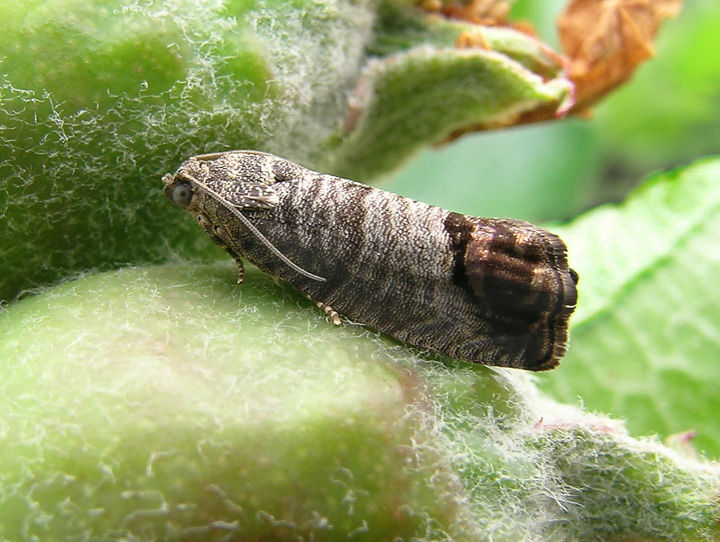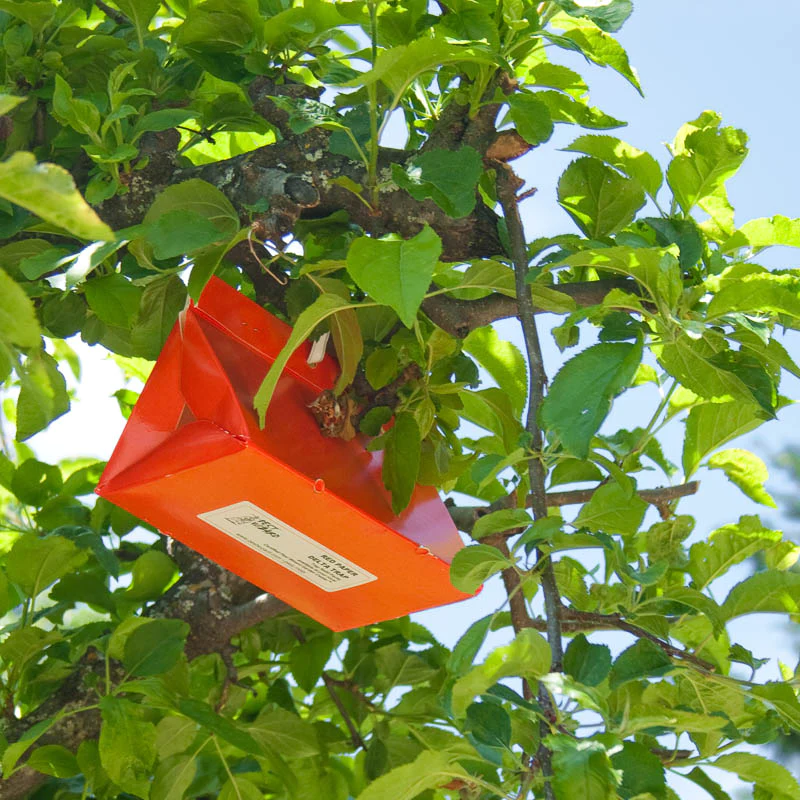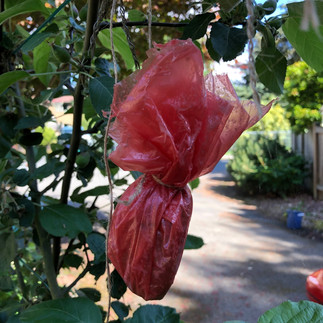Apple Tree Care & Pest Prevention
- MARNI growingrootstogether@gmail.com
- Jul 19, 2022
- 5 min read
Updated: Apr 10, 2024
If you have apple trees you are likely well aware that the fruit is prone to pest damage. I can't blame the pests.. who can resist the sweet deliciousness?
Although I have not found any one method to be one-hundred percent preventative, I have found a combination of techniques that ensures that I get a lot (more than I can personally use!) of pest free apples from my urban orchard.
Apple Pests
There are other types of apple tree pests, but the two that do the most damage to fruit here in the PNW are apple maggot and codling moth.
Apple Maggot

Apple Maggots are a type of fruit fly that deposit eggs on apples that feed while tunneling through the fruit.
Dimpling of the fruit is the classic sign of apple maggot fruit infestation. Pictured here, photo courtesy of WSU Extension.
The interior of the fruit will have brown tunneling and may or may not still contain the larvae.
Codling Moth

Codling Moths are small, usually grey or brown with striped banding, and lay eggs on leaves or fruit. The larvae then burrow through the apple to feed on the seeds and then exit to overwinter as adults.
Photo courtesy of WSU Extension. Also, a great place to learn more about Tree Fruit care and pest management.
Prevention: Pruning & Thinning
The best prevention is keeping your trees healthy. Timely and proper pruning and thinning of the fruit are key, as well as healthy soil and adequate water in summer.
Pruning
For knowledgeable pruning instruction, I've found in-person classes to be helpful, especially those where they are pruning the trees to demonstrate various techniques. Sky Nursery offers some classes taught by one of my favorite mentors, Ingela Wanerstrand. A great book that I refer to often for various fruit tree and shrub pruning is Grow Fruit Naturally by Lee Reich. A great resource for learning about various fruit trees and their care is to get involved with your local fruit club. In Snohomish County we are fortunate to have the Snohomish County Fruit Society - offering classes and talks on fruit growing.
If your tree is too big and hard to access you are not going to be successful with the next step: thinning your fruit, so consider that some restoration pruning may be needed in order to go onto the next step. Summer pruning (after the fruit is harvested) of apple trees can be very beneficial and is a good time to start!
Thinning Fruit
Trees make flowers and set fruit abundantly, without regard for how big each apple will be. A trees goal is to make as many seeds as possible! Thinning the fruit allows the tree to focus it's energy into ripening less but bigger, healthier, fruit. Also, crowded fruit is more susceptible to pests and diseases, thinning allows good airflow around each growing fruit.
Here's a short video on thinning your apple fruit in the spring. This video has no sound. Essentially it is showing the thinning of fruit so that only one apple remains per each fruiting spur. Chose the biggest apple and pinch or cut any others connected to the spur, being careful not to accidentally break the fruiting spur... but accidents happen.
You also do not want your tree to have too many apples along any one branch. As the apples get bigger it creates a lot of weight. However, you can continue to thin if you see this happening and if you have missed any sections of the tree that you see are getting crowded as the apples grow in size.
Some thinning is better than none! Do what you can and what you can safely reach with a standard ladder. Orchard ladders are a good investment if you have several fruit trees.
Prevention: Pest Traps
I use two types of traps that both added to the tree in the spring, just as the fruit is setting. Best to do this before the apples start to change color as the pests are attracted to bright colors.
For apple maggot you can use their color attraction against them by putting fake apples in your tree that are coated in sticky coating (such as TangleFoot brand which comes in spray or brush on). You can buy fake plastic apples made for this purpose, or you can make your own. See photos below.
DIY Directions: The red plastic is tomato frost protection/covering that I cut into squares and cover the rocks with, tying at the top with regular twine and leaving enough twine to then hang from a tree branch. I then carefully spray the fake apple with the Tangle Trap. I hang 2-3 of these from my Belgian fence espalier and up to five for a larger apple tree. The Tangle Trap is very sticky... so use caution when spraying and handling.
Apple maggots are also attracted to yellow, but I find that the yellow traps collect more flies and other insects that I do not wish to kill.

For codling moth I use a pheromone trap that is hung in the apple trees after fruiting to attract (and stick) the male insects, therefore causing issues with reproduction.
Here's one that I have used in the past, but there are others on the market. Just make sure they clearly state they are for codling moth.
There are also some DIY instructions for making your own codling moth traps using apple cider vinegar.
There are many different methods available for reducing pest damage to your fruit, including physical coverings or booties that get put over the fruit in spring as well as whole tree coverings! I've found that with these two prevention methods above I have more than enough perfect fruit for my family, friends and neighbors and the rest get used for the community apple cider press!
Hygiene
After the season is finished, be sure to harvest or pick up any and all fruit so that pests are less likely to overwinter in the soil!
Would you like help learning how to manage your urban fruit trees or food forest? I offer on-site consultations and garden coaching to work with you and your unique growing situation. Check out more information here and contact me today to learn more!
Share the Harvest
Even with sharing some with pests and neighbors, you will likely still have more apples than you know what do with. If your apple tree is a variety that grows storage apples they will store well in a cool area or fridge for many months. If your variety is fresh eating consider donating some to your local food bank. Food banks are so thankful to have fresh fruit (and produce) to share with your neighbors in need!
















Comments